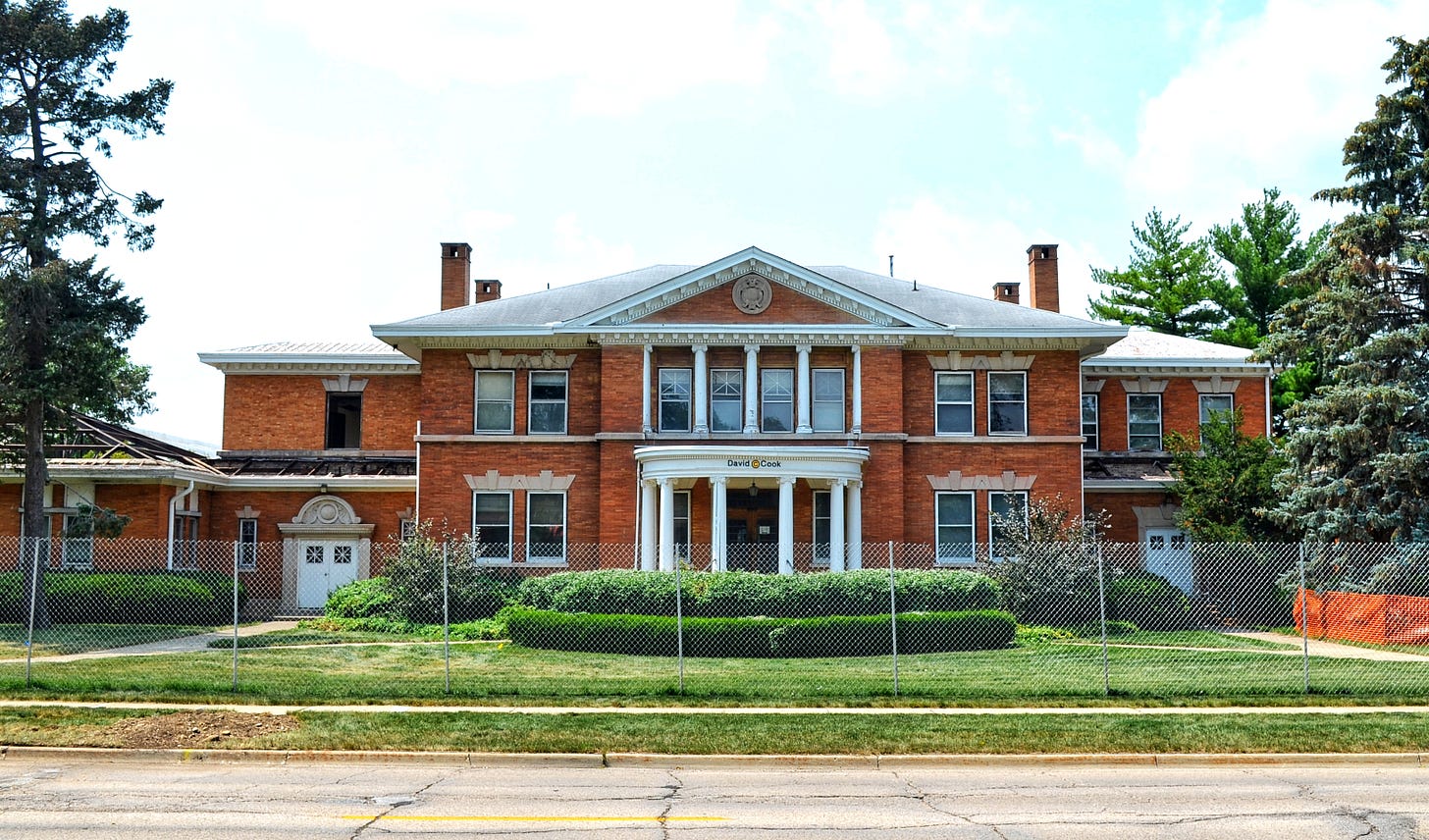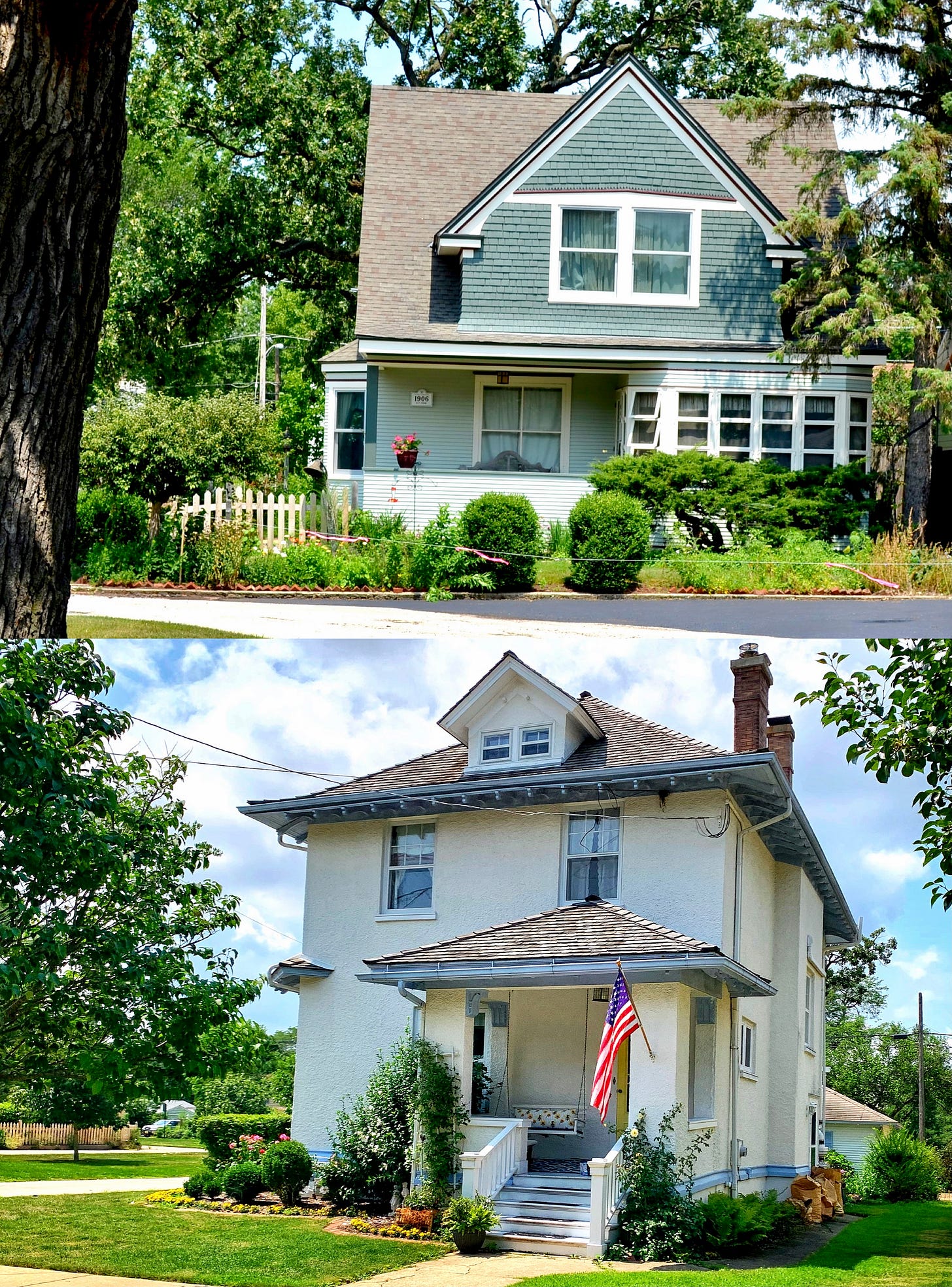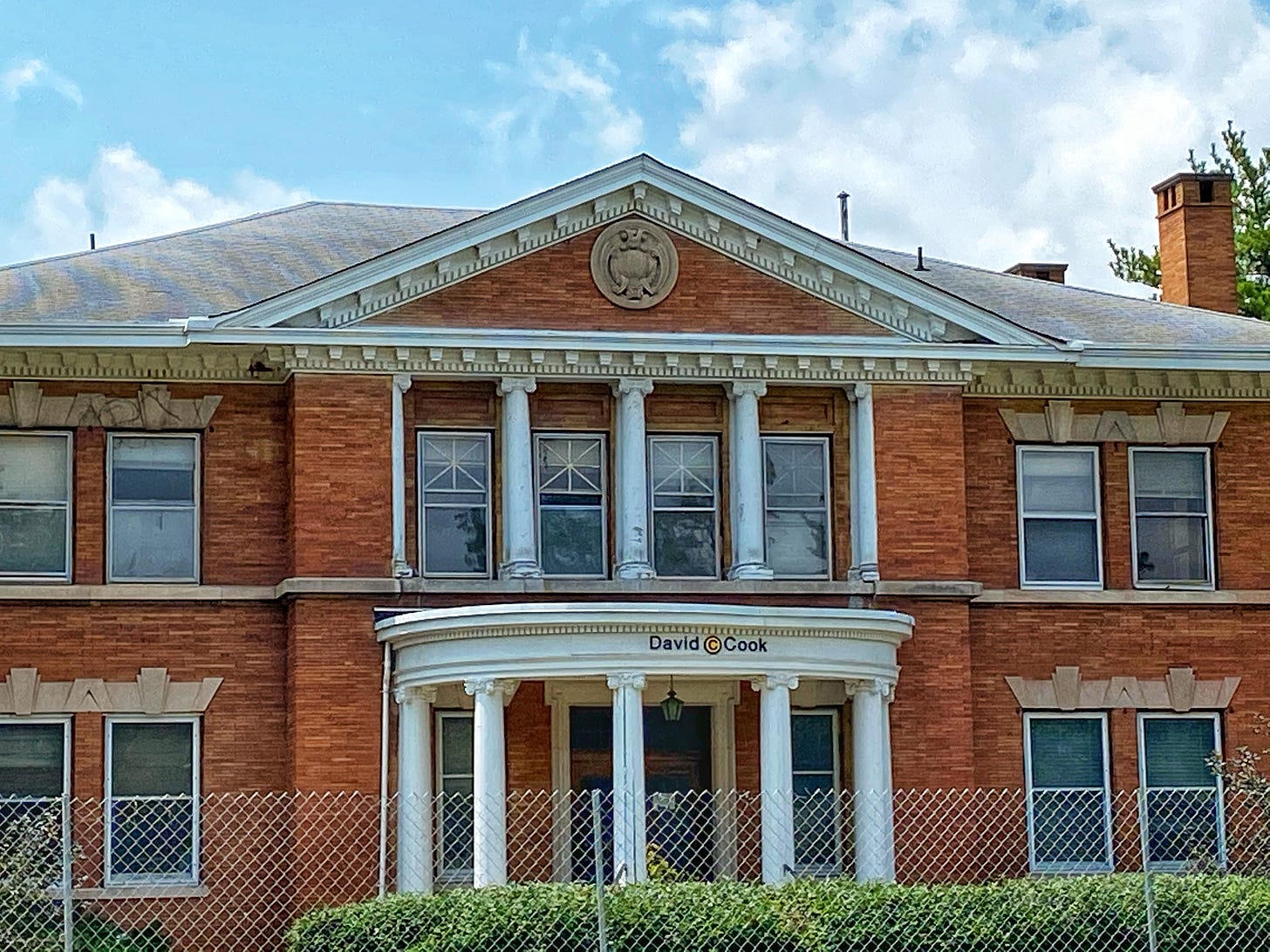Elgin's David C. Cook Building

Elgin is known for its history, which comes alive on the streets of its six historic districts. Tear downs aren’t a thing here, instead historic preservation rules the land as owners restore Elgin’s numerous old homes and receive official plaques and awards from the city. Every year a housewalk is presented by the Gifford Park Association (it’s next month if you’re interested) while Open Elgin highlights dozens of unique and historic commercial buildings, which open their doors to the public. Maybe that’s why I was shocked to find out the news last month that the Elgin City Council voted 5-4 against the landmark designation of the David C. Cook Building, paving the way towards its demolition.

Vacant since 1995, the religious publishing company that owns the building has been trying to sell it for decades after the business moved its operations to Colorado. A water main break in 2017 led to major disrepair inside, which most likely sealed the 120-year-old structure’s fate. City council member Steve Thoren called it “an icon” and part of Elgin’s history. Al Walters, president of the Elgin History Museum, talked about previous “eyesores” like Old Main on Park Street and the Nancy Kimball cobblestone house that ended up being saved and restored by the city. Although the mayor and other officials hope to see the site used as a future public park, the publishing company still owns the property so they can do whatever they want with it (and for whatever reason, did not sell it to the city of Elgin). I hate to see such a handsome structure torn down, especially knowing it was designed by local architect David E. Postle and it is the city’s only example of a Classical Revival style industrial building. I can’t believe the original facade can’t be reused in some way. What a waste!
So who was David C. Cook? In 1875 David Caleb Cook (1850-1927) began publishing religious pamphlets, specifically Sunday School lessons for children left homeless after the Great Chicago Fire. He also started a newspaper called Our Sunday School Gem. As his company outgrew its original location in Chicago’s Lakeview, Cook moved into an old woolen mill in Elgin’s central business district in 1882, and it soon became the city’s second largest employer after the Elgin National Watch Company.

In January of 1901 Cook acquired 160 acres of land just east of the Fox River from prominent Elginite, Captain Edward C. Lovell. This is where Cook constructed a brand new, two-block long building and plant for his publishing company. The structure was strategically placed near the Chicago & Northwestern Railway and its residential location made it an easy commute for the company’s workers.

Opposite his factory, Cook platted a boulevard around circular Esmeralda Park along with forty lots. He followed the social welfare trends of the time by putting up worker housing at 845 N. Grove; 843 Esmeralda Place; 814, and 826 Brook Street. They were rented out to employees like general manager Edwin E. Stewart. Or in the case of 814 Brook Street, occupied by single and widowed women. Chief engineer Edward S. Purdy constructed a lovely Prairie Foursquare at 834 Brook Street in 1907. As more houses were built by workers, the area around Esmeralda Park became known to locals as “Publishers Row.”

David E. Postle, who was based out of Chicago’s Marquette Building and lived at 54-56 N. Liberty Street in a duplex of his own design, was one of Elgin’s busiest architects at this time. He was responsible for many different kinds of structures, including the Pavilion at Lords Park. So it’s no surprise Cook hired him to design the publishing house’s main office building. Set back from the street, the central brick structure has a symmetrical facade, rounded portico, and pedimented front gable with D.C. Cook’s seal set in stone. It is flanked on each side with sprawling one-story wings that match the rest of the classical revival design. Not visible from the front are the rear factory buildings, including the power plant, stock room, press room, bindery, mail room, merchandise and shipping rooms. Between the 1920s and 50s, the company had become the world's largest interdenominational publisher of Sunday school literature and church supplies with more than 50 religious titles and a circulation of 5 million copies per month.

Ironically Cook’s own home at 105 N. Gifford St sat vacant and boarded up for a decade until it was purchased for a dollar in 2018. The 12-room Victorian mansion, which cost $10,000 to build in 1885, is where three generations of the Cook family lived until 1945. The home suffered from unsympathetic additions during the time it was used as a nursing home and has been stripped of its interior beauty when the building was foreclosed upon by a bank who sold its contents to Eric Nordstrom of Urban Remains (you can read more about the “deconversion” here).

Although there is an estimated million dollar price tag to restore Cook’s residence, new owners Ramona and Sam Jones have rehabbed several old homes in the past and are excited to take on a new project. Hopefully they will bring this historic home back to life like other Elgin owners have done. At least one structure associated with David C. Cook will survive into the future.
Just like the Elgin National Watch Factory, the D.C. Cook publishing house was an important part of life in the local community. At the start, middle, and end of every workday, the bell known as “Cook’s Whistle” could be heard for miles around the city until 1956. These two companies *made* Elgin. Unfortunately they will now both be a thing of the past. The beautiful old watch factory was demolished in 1966. Today it’s a strip mall. Now 55 years later the Classical Revival publishing house and plant built by D.C. Cook over a century ago awaits the same fate.
Sources:
Daily Herald
https://historicelgin.com/
Illinois Digital Archives
http://www.nenaofelgin.org/wp-content/uploads/2019/10/850-N-Grove-Avenue_Historic-Importance.pdf
https://patch.com/illinois/elgin/historic-elgin-mansion-sells-1



